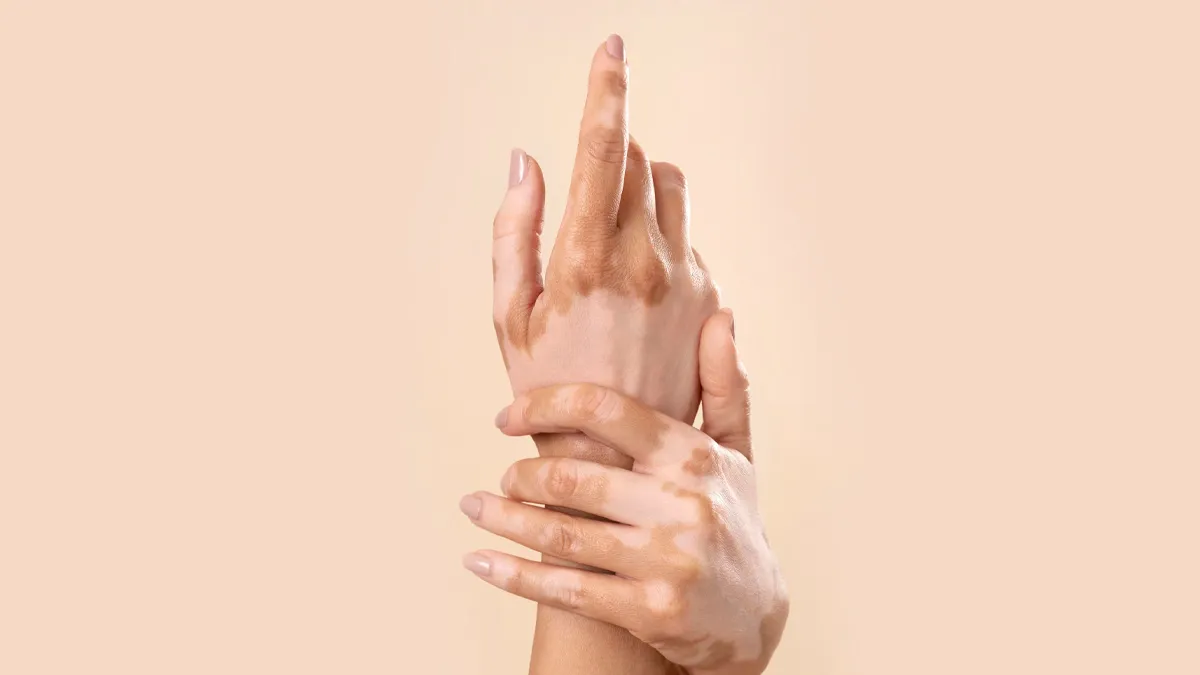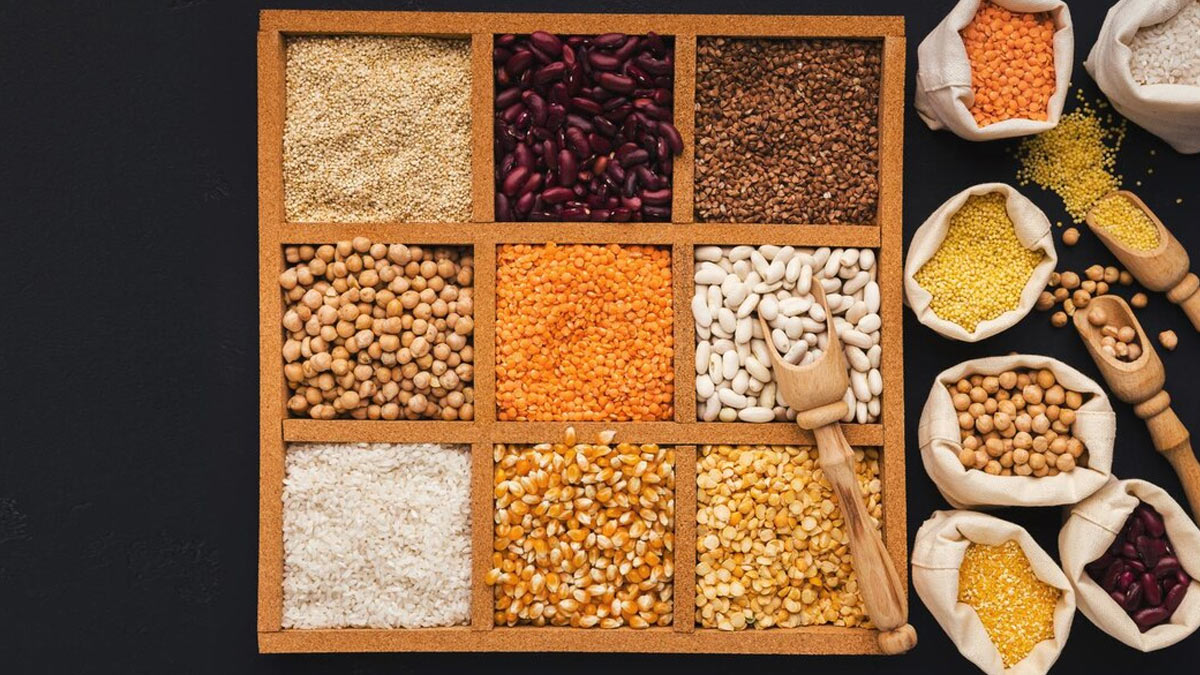
Vitiligo is an autoimmune skin condition leading to the loss of pigmentation, resulting in white patches on the skin. This causes your skin to appear lighter than your natural skin tone, or it turns white.
Table of Content:-
Dr Kashish Kalra, Head of Department and Consultant, Dermatology, Max Smart Super Speciality Hospital, Saket, describes vitiligo as an autoimmune disease in which the body’s immune cells malfunction and attack melanocytes (which produce melanin that gives skin its colour), causing white patches on the skin and body.
According to the study published in the National Library of Medicine, vitiligo affects approximately 0.5 - 1% of the world population. The study also found that the average onset of vitiligo is 24 years, the number of men and women affected by it is the same, with no discrimination based on race or skin type. According to the study, Gujarat has the highest rate of vitiligo cases in India, estimated to be 8.8%.
Types of Vitiligo
- Generalised: This is the most common type of vitiligo, where patches appear on various parts of the body.
- Segmental: In this case, only a section of the body is affected. For example, your hand or face.
- Focal: In focal vitiligo, macules appear in one place and don't spread to other areas of the body for two to three years.
- Mucosal: The mucosal vitiligo affects the mucous membrane of your mouth and genitals.
- Trichome: Trichome vitiligo causes a bullseye with a white or colourless centre.
- Universal: It is a rare condition where 80% of the skin loses its pigmentation.
What Are the Causes of Vitiligo
The first reason for vitiligo is that it is an autoimmune condition. In this case, your immune system mistakenly attacks healthy cells (melanocytes), considering them to be harmful to your body, causing white patches.
Next, the genetic changes in your body can also cause vitiligo. A genetic mutation or change in your DNA can be the reason for this. They affect melanin production in your body.
Exposure to toxic chemicals and ultraviolet radiation can affect the functions of melanocytes in your body.
Also Read: Vijay Varma On Suffering From Skin Condition Vitiligo; Symptoms To Look Out For
Vitiligo and Indian Diet

Vitiligo cannot be cured permanently. However, eating a wholesome and balanced diet can provide support in making life easy for people living with vitiligo. A proper diet will help you manage the symptoms and promote skin health. According to Dr Kalra, there is no one diet role for all, but rather it varies from person to person. He advised avoiding a diet which has a high concentration of vitamin C, as it may further worsen your skin condition. He further stated that one should not avoid vitamin C, and be mindful when including it in their diet. A study published by the National Library of Medicine on Diet and Vitiligo: The Story So Far mentions that vitamin C is not used and is contraindicated in treating vitiligo as it disrupts the melanin production pathways.
Some of the Indian diet recommendations to support your vitiligo journey include:
- Antioxidant-rich fruits and vegetables, including papaya, apple, banana and mango. In vegetables, you should include beetroot, carrot, broccoli, drumsticks (moringa) and pumpkin.
- Whole grains and pulses like brown rice, whole wheat, ragi, moong and masoor dal, chickpeas.
- Food rich in omega-3, salmon and fish, can also be great sources of protein and help in skin health with vitiligo. This also dispels the myth that eating fish, eggs, or non-veg can cause vitiligo.
- Nuts and seeds, such as almonds, walnuts, sunflower seeds, and flaxseeds, are rich sources of zinc and vitamin E, which help with vitiligo patches and support healthy skin.
Myths about Vitiligo
Dr Kalra also sheds light on some of the myths around vitiligo.
Vitiligo is caused by consuming milk after fish. However, these are not true and have been proven wrong by many scientific studies. If these were to be believed, then coastal areas would have been top affected.
Consuming non-vegetarian food can cause vitiligo. There is no scientific or medical data to back this up. There are cases where even vegetarians have had vitiligo.
Vitiligo is skin damage caused by the sun. Vitiligo is sometimes mistaken for sunburn due to the appearance of the patches, but in reality, it occurs when the body’s immune cells attack its pigment-producing cells.
Vitiligo is a contagious disease. This is the biggest myth about vitiligo: it is a non-contagious disease. The patches can look scary to some, which leads them to think that they can spread by touching. However, this is not the case, and it cannot be spread by physical contact.
Also Read: Vitiligo Isn’t Contagious — And 3 Other Myths Debunked
Conclusion
Vitiligo cannot be treated or cured fully, and hence, one needs to live with it. Well, society can be harsh to people who are different or look different due to their skin conditions, and it is not something to be ashamed of. All you have to do is get the right dermatologist and understand your body and skin requirements, and include diets that will help build your immune system stronger. Dietary consideration plays a supportive role in managing vitiligo. Taking a proper and nutritious diet (tailored to your personal and environmental needs) and avoiding excessive amounts of vitamin C can help you go a long way. Living with vitiligo involves more than just managing your diet and physical symptoms; it requires cultivating strong mental and emotional well-being. Hence, be kind to people around you going through these skin conditions.
Disclaimer: This article provides information from an expert and is intended for general knowledge only. If you are experiencing skin issues, it is crucial to seek advice from a qualified professional to ensure appropriate care.
Also watch this video
How we keep this article up to date:
We work with experts and keep a close eye on the latest in health and wellness. Whenever there is a new research or helpful information, we update our articles with accurate and useful advice.
Current Version